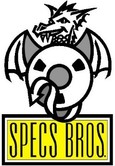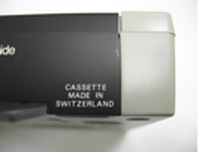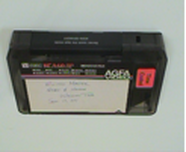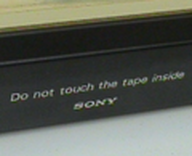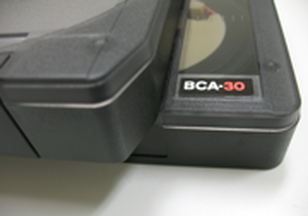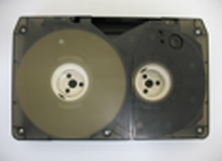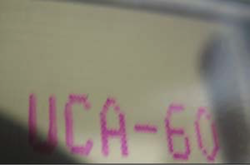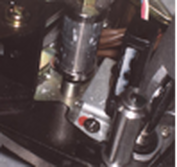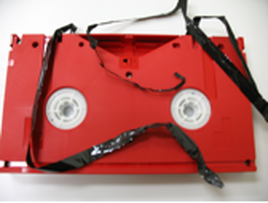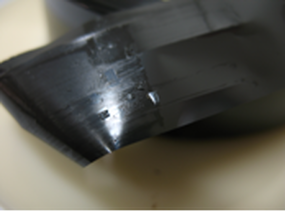WHITE PAPER: Common Signs of
Problem 3/4" and Beta Videocassettes
Organizations are frequently encountering difficulties trying to play old 3/4" and Beta-oxide videocassettes. The following are ways to identify those cassettes most likely to exhibit problems.
¾” U-matics with “sticky shed”
Most ¾” with sticky shed problems will have a
RECORD DATE between 1975 - 1985.
Sticky shed can jam, crease, scratch/score, damage and rip tapes -
As well as clog or damage machine heads.
¾” Tapes from ’75 – ’85 that almost always have sticky shed are:
SONY ¾”with sticky shed
often smell like “crayons”
or “wax”
“MADE IN SWITZERLAND” ¾”
or AGFA often smell like “dirty socks”
**************************************************************************************
Another ¾” tape from ’75 – ’85 that has sticky shed is:
often smell like “crayons”
or “wax”
“MADE IN SWITZERLAND” ¾”
or AGFA often smell like “dirty socks”
**************************************************************************************
Another ¾” tape from ’75 – ’85 that has sticky shed is:
AMPEX ¾” with sticky shed usually HAS NO SMELL!
¾” U-matics with “white powder”
A common problem with SCOTCH or 3M tapes from 1975– 1985 is WHITE POWDER.
White powder does not cause tapes to stick but scratches tapes, blocks signal and causes major head clogs.
(Note: Tapes that are subject to “sticky shed” can also have white powder)
A common problem with SCOTCH or 3M tapes from 1975– 1985 is WHITE POWDER.
White powder does not cause tapes to stick but scratches tapes, blocks signal and causes major head clogs.
(Note: Tapes that are subject to “sticky shed” can also have white powder)
|
SCOTCH or 3M
Cassettes can be white or Green/Gray-Green/Gray cassettes are more likely to have white powder.
|
Identifying Code
Back of Scotch/3M cassette usually says UCA
|
Inside of 3/4” Deck
Inside of 3/4" deck after running tape with white powder (Deck cannot be cleaned with "cleaning cassette.")
|
*************************************************************************************************
Betacam (oxide only) tape with “sticky shed”
Most Betacam tapes with sticky shed are not associated with a particular record date.
While some SONY Betacam (BLUE shell) may have sticky shed, most appear to be OK.
The Betacam tapes that almost always have sticky shed are in RED cassettes.
AMPEX Betacam usually have sticky shed.
While some SONY Betacam (BLUE shell) may have sticky shed, most appear to be OK.
The Betacam tapes that almost always have sticky shed are in RED cassettes.
AMPEX Betacam usually have sticky shed.
*All tapes with physical damage should be repaired before playback*
